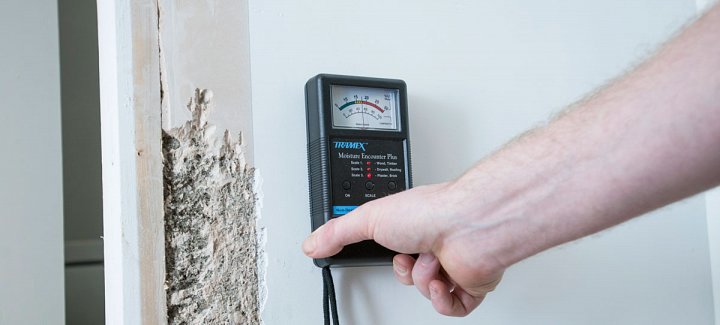The goal of moisture detection in the water damage restoration industry is to identify and assess abnormally wet locations of buildings, structures and their materials so that the drying process can be measured, documented and carried out effectively and in an economical and efficient manner. The building investigation and/or restorative drying professional should establish the source and extent of the moisture damage that has occurred as well as a baseline moisture content objective or ‘drying goal’.
Excess moisture and humidity left within a building environment or its structural elements is the cause of damage to structural materials such as rot, mold growth, reduced insulation values, failure of flooring, roofing and wall support.
To avoid such issues the building investigation and/or restorative drying professional needs the right diagnostic and drying equipment to carry out their work professionally and efficiently. The moisture and humidity conditions of the building structure and its environment need to be tested at the beginning, during and at the end of the drying process. The best way to measure and document the progression of the drying process is with dependable thermo hygrometers for environmental ambient conditions, moisture meters for the moisture conditions of building materials and mapping technology to document these readings.
To carry out the building investigation and restorative process efficiently and effectively it is also important to have knowledge of the building construction components and materials, as well as the internationally recognized standards and reference guides for water damage restoration, such as IICRC S500 or UK PAS 64.
Initially, using infrared cameras and moisture meters, it is necessary to establish which building materials are ‘wet’, which are ‘not wet’, and to trace the leak back to its source. Determining the cause of loss or point of entry, identifying and mapping the ‘what’s wet’ and ‘what’s not wet’ will allow for focused drying where most needed, and once measurable, ongoing monitoring helps ensure the materials are drying properly.
Having brought the elevated moisture conditions back to measurable drying conditions, the monitoring of the drying process begins with the identification of all of the affected materials. By tracking the water from its initial source, diligently following it in every direction it has migrated, the restorative drying professional can establish an accurate and precise picture of the extent of the damage. An understanding of the types of affected materials, their porosity, the extent of the water absorption, as well as an understanding of moisture movement, will provide the framework for the management of the drying process.
